Reproduction of fuchsia by cuttings at home
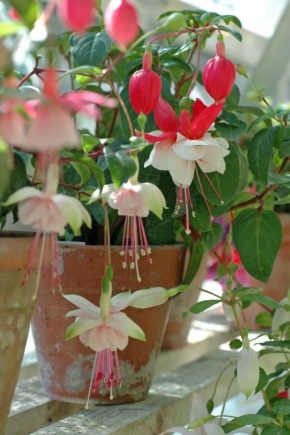
Fuchsia is one of the widespread indoor flowers. This plant is distinguished by many hybrid varieties, of which more and more appear every year.
Due to the variety of species and a wide color palette of inflorescences, you can independently grow flowers that, with their bright colors, will create an ideal phytodesign of a home and fill it with soulfulness and beauty.
Fuchsia is undemanding to care, it develops well and reproduces by cuttings.
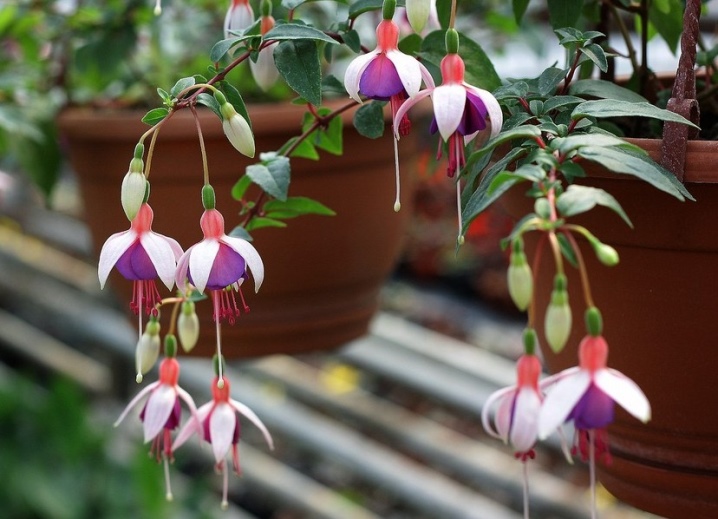
Features of propagation by cuttings
Fuchsia can be propagated in two ways: by seeds and cuttings. They are rarely propagated by seeds - in greenhouses for breeding purposes. Cutting has more advantages, and this method is used at home. The shoot takes root after a month. During grafting, the original varietal parental qualities are preserved. And in the future, it is easier to care for a young seedling.
Fuchsias can be cut through the entire growing season. But ideal time is from February to late spring... Cuttings harvested in early spring form roots more easily and develop better.
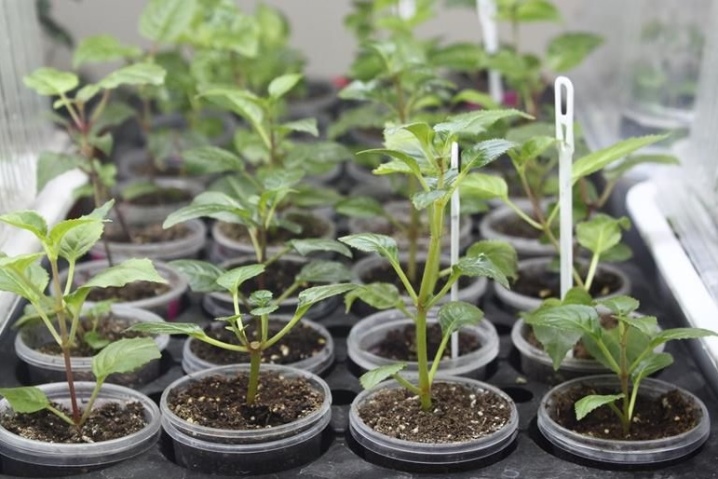
They can also be cut during the summer months, but when the heat is mild. Another favorable period is August and early September. It is during this period that young shoots will take root in a few days.
Cutting in the fall is combined with the pruning procedure, when dry, weak shoots are removed from the plant to form future new foliage.
The sturdiest cuttings are used for cutting cuttings. But planting autumn cuttings will not work right away... After transplanting, the flower will immediately begin to grow, and a short daylight hours and a lack of lighting will lead to the fact that the shoots will elongate, become weak and long. Therefore, they are stored in cool places: in garages, basements or refrigerators.

For the purpose of cuttings, the winter months are least suitable, because in cold weather the flower has a period of rest and rest.
For propagation by cuttings, any part of the plant is suitable, except for the flower. The starting material can be a large mature leaf with a strong petiole. The leaf is pulled from the stem with a sharp and precise movement. Or just cut it off along with the stem. At the base of the plucked petiole there is a bud, which, when germinated, gives a strong young plant.
Another option is to simply purchase flower cuttings from the store. But immediately after purchase, they should be transplanted.
Rooting methods
It is best to root cuttings in the spring to provide sufficient light, moisture and warmth. At other cooler times, they are placed in a bright and warm place in the apartment, but not in direct sunlight.
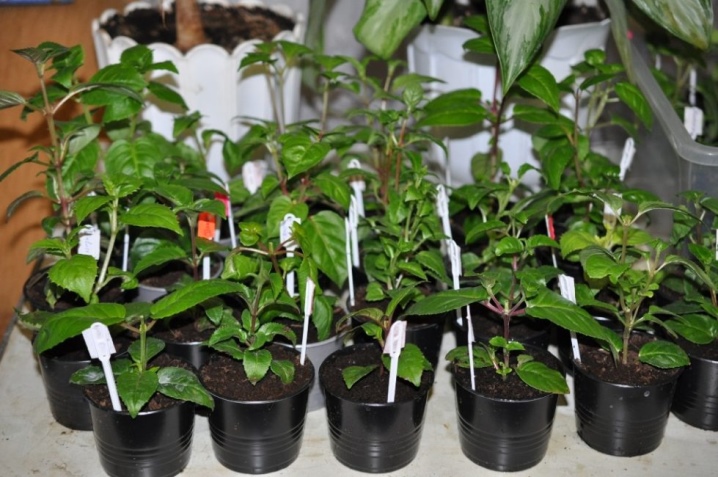
The most common rooting methods are in soil, water and peat tablets.
In the ground
Bypassing the stage of water growing of roots, the shoot is deepened into the ground under the cover of a greenhouse.
In peat tablets
It is very convenient to root shoots with a weak root system - since the peat is soft, and there is already a ready-made recess for the cutting, so the root system is not injured.
The compressed tablet has various sizes and is enclosed in a stretchable mesh shell.
The stalk is stably kept in moist peat. And it is easy to transplant it along with the peat lump into a large container of soil without damaging the roots.Peat retains moisture for a long time, its surface does not dry out. Therefore, rooting takes about a month. When transplanting a cutting, it is not necessary to remove the tablet shell.
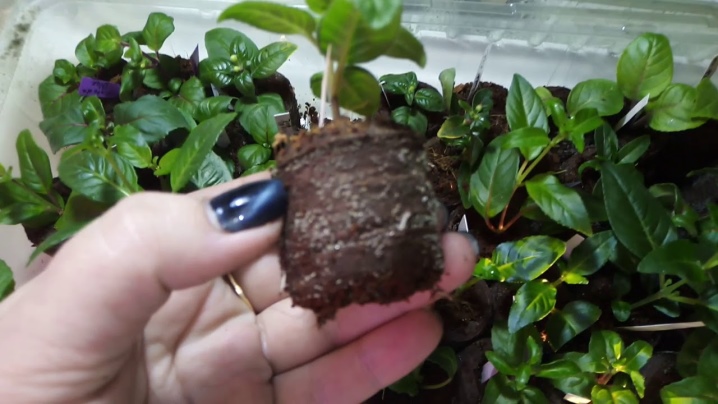
In water
The stalk is placed in a clean container with boiled water under the greenhouse. It will take root in the water without any additional action. It is advisable to put an activated carbon tablet in the same place - this will reduce the risk of its decay.
The main stages of cultivation
It is quite simple to propagate fuchsias at home. Knowing the procedure and applying a little effort, you can achieve an excellent result.
Preparing cuttings
Cuttings can only be harvested when the fuchsia has faded. It is necessary to start with the selection of a strong donor flower, on which the full development of the shoot depends. If the original donor material was rarely fed with fertilizers or, conversely, often with nitrogen, then the cutting will root weakly or simply rot.
You should choose the right plant fragments for propagation. The stems are cut so that there are up to three internodes between them. An ideal shoot for a cutting can only be young and green, because older shoots are more difficult to root. They will work too, but the roots will take longer to form.
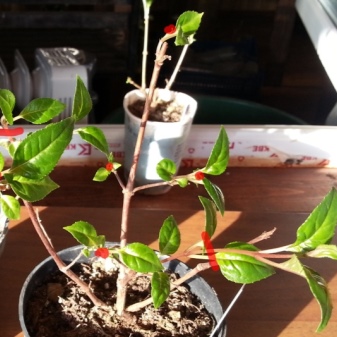

Shoots with a height of 10 to 20 cm are cut with a sharp, clean knife with an oblique cut - it is most convenient for the flow of water and nutrients.
Then, all leaves except the top two are removed from the stem fragment to reduce moisture evaporation and facilitate rooting.
Then you should wait 10 minutes for the cut to dry, and treat the cut site with any root formation stimulant - natural phytohormones, natural bioregulators, which have a stimulating effect and increase the immunity of cuttings.
Substrate
To root the cuttings, a loose and moisture-absorbing substrate with a neutral or slightly acidic reaction is required - this is the medium that is suitable for fuchsias.
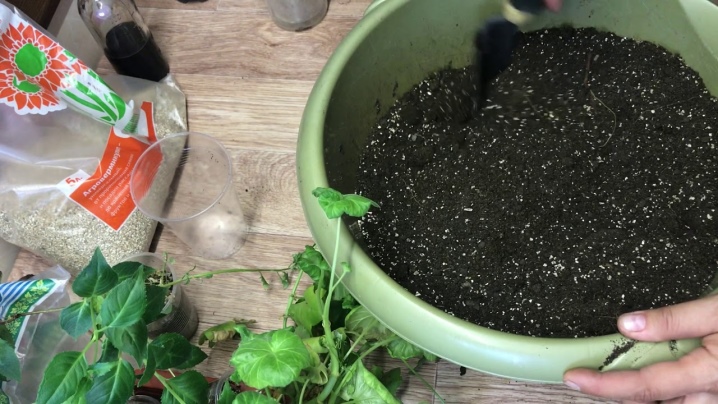
In addition to earth, the peat and water tablets described earlier use a number of other options.
- Planting palette with vermiculite, sawdust and sand.
- Coconut tablet made from compressed coconut fiber that retains air. It allows the roots to breathe and prevents rotting.
- Perlite is a natural volcanic material that acts as a baking powder. It prevents caking, reduces the risk of rotting and crusting on the surface of the earthen coma. They are diluted with a mixture of sand, sphagnum and peat.
- Vermiculite is a rock mineral rock, an environmentally friendly layered mineral. It effectively creates a favorable microclimate for the development of roots, actively stimulating their growth, reduces the disease of rot, and optimally regulates the air-humidity regime. As a sorbent, it cleans the soil of harmful toxic substances, it can absorb fertilizers and gradually feed the roots with them. It is used independently and as part of earthen mixtures.
- A hydrogel is a soft polymer granules that absorb and retain water and slowly release it to the roots when they either grow into the granules or come into contact with them. Air freely reaches the roots through the openings between the granules.

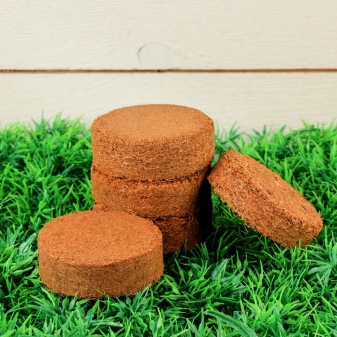
Groundless substances are also suitable and often used for rooting cuttings. One of the commonly used mixtures consists of perlite, vermiculite and peat - very light and low in nutrition, it is ideal for propagation.
Creation of conditions
After planting in the substrate, the cutting needs the right microclimate. Not yet having its own roots supplying it with water, it needs high humidity. To do this, the stalk is placed in a mini-greenhouse from an ordinary plastic bag. To avoid the accumulation of condensate, it is periodically opened and ventilated.
For photosynthesis to take place, cuttings need diffused light. Direct sunlight is not suitable for them and can harm them. You can make up for the lack of natural light by using LED and fluorescent lamps.
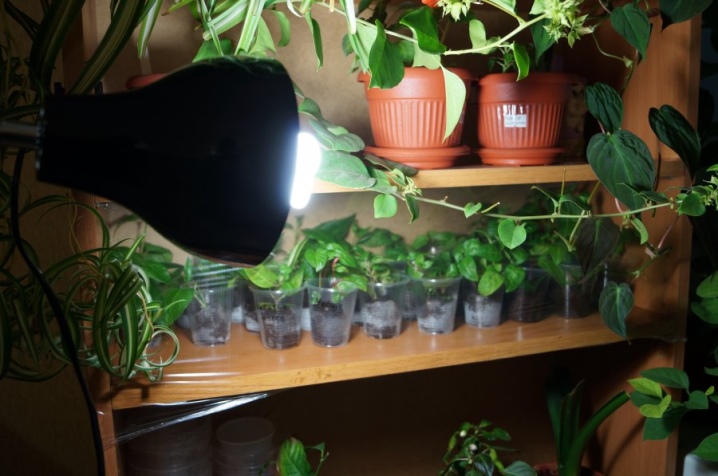
It is necessary to maintain the optimum temperature for rooting cuttings at + 25 ° C.
When rooting is done in water, it is necessary to monitor the water level so that it does not decrease, periodically refilling it to the optimal level. If a different substrate is used, then it should not be allowed to dry out and, if necessary, moistened.
Transfer
After rooting, when the cutting has already begun, it needs to be planted in a small plastic container. When the roots braid all the soil available in a small container, you should transfer the cutting into a container with a 2 cm larger volume with a greenhouse, then pour it with warm water.
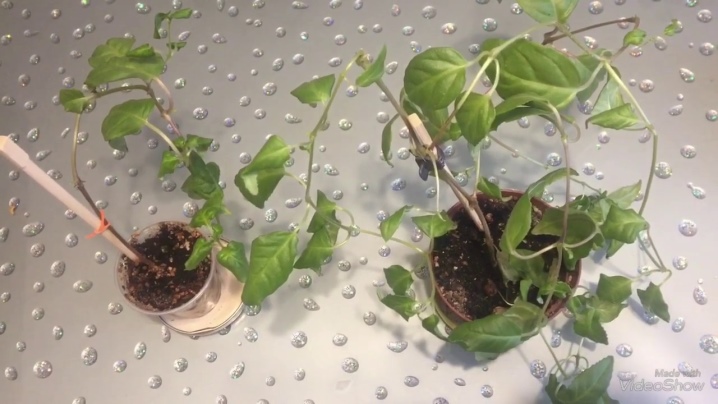
Transplanting can injure fuchsia due to the fragility of the roots.so it is important to be careful during the transplant process. Actively growing cuttings during the summer season must be transferred to a large container up to 6 times.
Further care
After transplanting into a mini-greenhouse, the cuttings should be ventilated at least twice a day by letting in fresh air.
After 2-3 weeks, the stalk is again transplanted into a larger pot, preferably a ceramic one. Ceramics are able to protect the plant from overheating in summer.
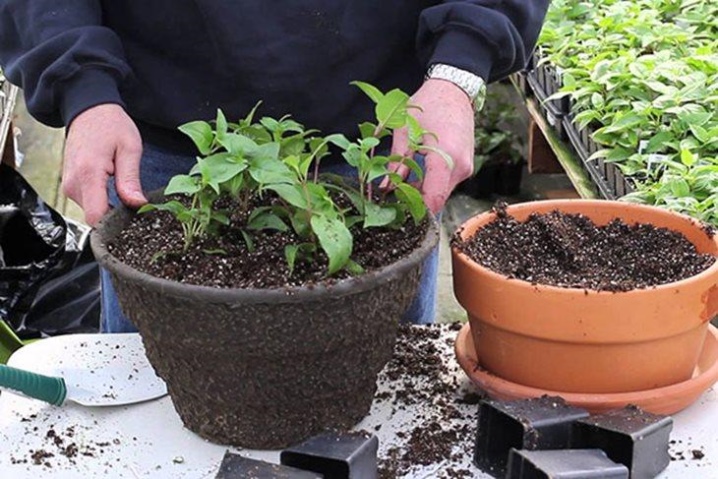
Then they begin to accustom the sprout to fresh air, opening the greenhouse each time for a longer time. Because only hardened fuchsia cuttings can be planted outdoors.
Expert advice
To grow a beautiful fuchsia by cuttings, you should heed the simple but effective advice of experienced flower growers.
You cannot cut cuttings from a plant that has itself been propagated by cuttings. The scion will grow very weakened and more susceptible to disease.
Cuttings cut in the fall can be stored in bags filled with sawdust or soil in the winter. As already mentioned, their storage until spring can be a garage, basement or refrigerator in an apartment.
These early autumn cuttings of fuchsia, already rooted and planted in small pots, can be transferred for winter storage to a loggia with double-glazed windows. But young shoots should not winter on the floor. It is advisable to place them on some kind of elevation. You can, for example, adapt the stand or use a large drawer, bedside table, table. At higher elevations, the air is much warmer. It is recommended to place pots with cuttings in a box, pressing them tightly to each other, and cover them with sawdust or sand. This will make your fuchsia winter vacation as comfortable as possible.
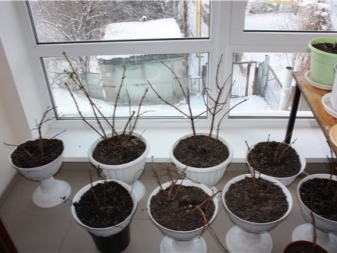
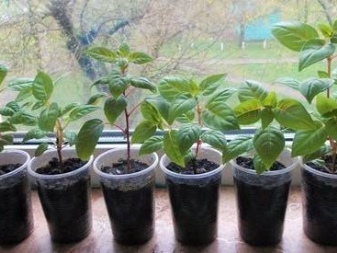
Instead of watering, you should only moisten the upper fill layer as needed. If you place young sprouts in this way in October-November, then for all the time of their winter dormancy, the shoots will strengthen, gain strength and become completely lignified. AND in spring they will easily and quickly grow and form strong, especially viable young plants.
If the cuttings begin to root in the colder months, then they need to provide additional lighting and maintain the air temperature and humidity levels that are optimal for the summer period.
Every day it is necessary to spray them with warm boiled water from a spray bottle. To maintain the immunity of fuchsia, bioregulators of growth should be added to the spraying water every week.

If the appendage rots from below, then you need to update the cut and, changing the water, continue rooting. Sometimes it happens that the leaves of a cuttings rooted in water wither - spraying and building a mini-greenhouse will help.
Cuttings do not like it when the water is completely replaced - from this they often get sick and sometimes die. Add water as it evaporates and only a little.
Water the planted cuttings preferably with warm water with the addition of root formation stimulants. The solution should be made weakly concentrated - from a higher concentration, the cuttings rot, not having time to give roots.

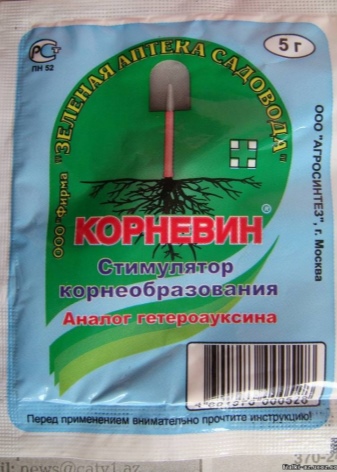
Here are some helpful tips for choosing a substrate.
- The substrate can only be used poor in nutrients.Otherwise, rooting will be unsuccessful.
- Roots grown in water are not well adapted to another substrate; after planting in the ground, they have to re-root.
- The tops left from the pinching are best rooted immediately in a light soil mixture. You can use coconut soil mixed with vermiculite and a small addition of ready-made flower peat soil.
- Garden soil is not suitable for rooting cuttings - it is better to use peat, coconut substrate, sand, adding moss, charcoal and inert additives to the mixture.
- It is necessary to ensure that the hydrogel granules swollen from water do not stick tightly together, otherwise oxygen will not reach the roots.
- You can not add dry polymer to the pot with the cuttings - after watering it swells a lot and damage the delicate cutting.
- You do not have to wait long for long roots to grow, but immediately plant the cutting in the substrate after the first young roots appear.
- It is not necessary to strongly compact the substrate around young fragile roots, after moistening it will tightly cover them.
- Some gardeners, without rooting cuttings in water, plant them directly in the ground. This can be done only by creating the necessary greenhouse conditions for them.
- When planting, it is better to hold the stalk by the leaves, and not by the delicate stalk, so as not to accidentally injure it.
How to propagate fuchsia by cuttings at home, see the next video.







































































































The comment was sent successfully.